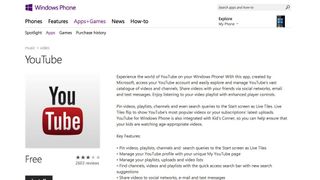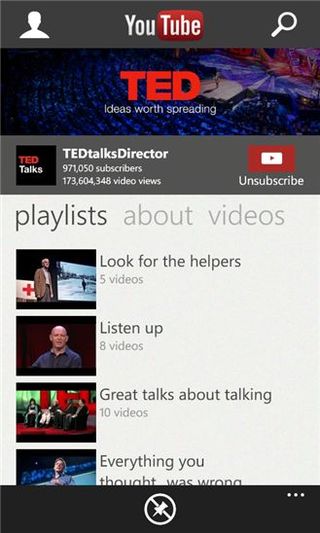Microsoft's YouTube app returns, brings uploads to Windows Phone
Ya happy now, Google?

After much back and forth and pulling of apps, YouTube is back on Windows Phone.
Today the app returned to the Windows Phone Store, and Microsoft sent around a statement confirming the app's newfound availability:
"We've released an updated YouTube app for Windows Phone that provides the great experience our consumers expect while addressing the concerns Google expressed in May, including the addition of ads," the statement read.
Google had previously demanded Microsoft pull its version of the app because it blocked ads. The companies vowed to work together on a solution, and today it looks like we have it...though apparently with advertisements.

What's new?
The Softie-crafted app's biggest change is that it allows users to upload videos directly to YouTube.
The core Tube function may not be perfect, however: According to testing by The Verge, videos only upload when a phone is plugged in, charging and connected to Wi-Fi.
The publication did find that users can navigate from their home screens through voice search and voice activation.
Get daily insight, inspiration and deals in your inbox
Sign up for breaking news, reviews, opinion, top tech deals, and more.
V. 3.2.0.0 - supported by with Windows Phone 7.x and Windows Phone 8 - will let viewers stream live video channels through their devices. Users can also manage their profiles through the My YouTube page, while they can also find channels, videos and playlists through a search bar decked out with new search suggestions.
Users can pin videos, playlists, channels and search queries to their Start screens as Live Tiles. The app is free and available right now.
- Once you check out the new WP YouTube app, why not learn about the Surface 2?
Michelle was previously a news editor at TechRadar, leading consumer tech news and reviews. Michelle is now a Content Strategist at Facebook. A versatile, highly effective content writer and skilled editor with a keen eye for detail, Michelle is a collaborative problem solver and covered everything from smartwatches and microprocessors to VR and self-driving cars.

